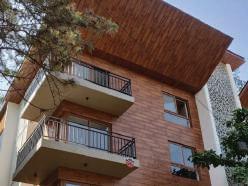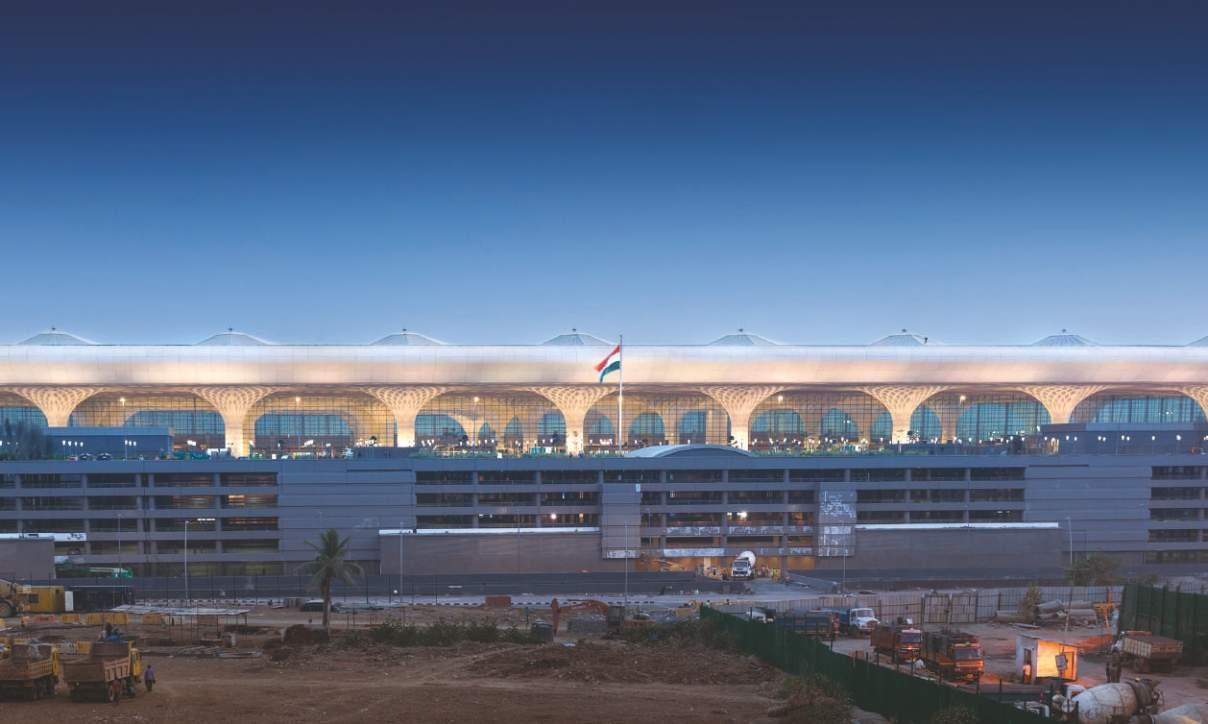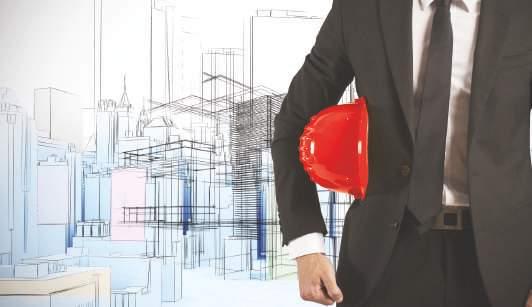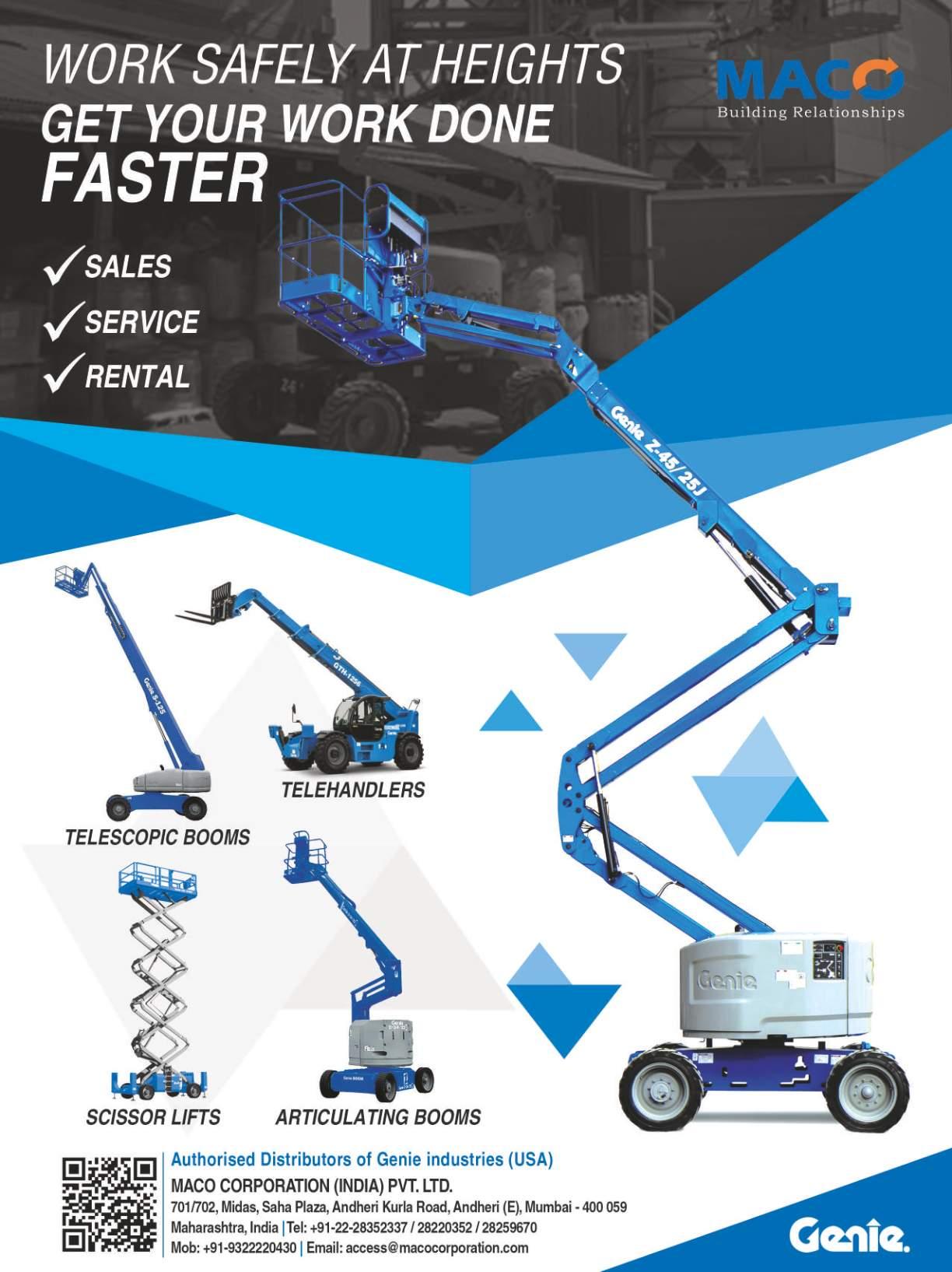
18 minute read
The construction industry will be at the center of rapid economic and social change

Advertisement
Katerra specialises in putting modern technology to work at all levels of building design and construction to help address some of the most entrenched challenges. Nejeeb Khan, Head Design and Business Strategy in India, Katerra, believes that construction sector will play a crucial role in India’s growth.
How is the construction sector coping with current challenges in Indian economy? The construction market in India is valued at $1.2 trillion plus and is a significant contributor to the economic and social growth of the nation. However, the sector faces numerous challenges, reducing its efficacy and unhindered growth prospects. The Indian construction industry, traditionally, has been quite slow in adopting new technologies, and this has been one of its biggest challenges. Several surveys show how, over the years, real estate developers have continued to under invest in technology-driven solutions for construction, despite acknowledging the many benefits that these solutions can provide to run and manage their construction projects.
The broader focus of the industry currently is to make construction both sustainable and energy-efficient through advanced technologies. Strict project timelines and increasing costs make it necessary for companies in the construction space to adopt new technologies to stay relevant. A more technology-driven approach to design and construction can be a catalyst for India to become a global leader in the construction space and boost the Indian economy.
What kind of new inventions and techniques can we see in the upcoming year? Poised to become the world’s thirdlargest construction sector by 2025, India is witnessing a high uptake of modular










techniques. Today, global companies are expanding their presence in India, indicating a significant requirement for offices, co-working spaces, and tech parks across the country, especially in Tier II markets.
Similar to how China witnessed exponential growth in its construction sector over the years by embracing technology-based construction methods, we, at Katerra, believe that India should also take the same route to construct commercial and housing projects. 2020 will witness increased use of technologies such as datadriven design, Design for Manufacturing and Assembly (DfMA), modular construction, offsite manufacturing, intelligent buildings, and construction software, amongst others, changing the way construction projects are being managed. Technologies such as Artificial Intelligence, Virtual Reality, and Augmented Reality will play a significant role in improving worker performance and efficiency.
How is the sector growing vis a vis urban vs rural? The relocation of the population towards urban shores will boost the demand for residential construction in the coming years. To cater to this demand, real estate developers are now embracing new-age construction technologies for faster completion of projects and better-quality construction.
With the private players rushing in to fill the gaps and taking the leading edge in the construction industry, innovation will bring in some of the most exciting trends in the field of construction technology.
How much can fast-tracking of projects and relaxation in bureaucracy further boost the construction sector? The real estate sector is grappling with delayed project deliveries, lack of funds, high unsold inventory, and a growing proportion of stalled projects. Unproductive assets in the form of under construction, stuck or delayed projects are estimated at 560,000 homes worth `4.5 trillion ($65 billion) across the top seven Indian cities. However, fast-track construction by using technology and the right planning/implementation of fiscal measures by the government will increase productivity in construction and help stabilise and grow the market
How can the new metro/monorail projects help the sector in the next year? Metro Rail Systems will improve connectivity across Indian cities, in densely populated areas, it will help reduce population density and open new pockets for development.
Good connectivity reduces travel time from central business districts. It creates an opportunity for developers to create new development in peripheral residential areas that can be better planned and offer new sustainable, and intelligent living solutions.
How can the sector play a positive role in tackling pollution? Construction has a high impact on the environment in its consumption of energy, both directly and through the materials it uses. Building materials such as asbestos, insulation, paint, and dust have the potential to affect human health and the environment. An excellent way to tackle pollution created through construction sites is through offsite manufacturing, in a factory-controlled set up where minimum waste is generated. Modules and components are assembly-line manufactured and then transported and assembled on site. At Katerra, our process of end-to-end design and offsite construction uses less water and energy creates minimal waste; this, coupled with a robust recycling system, making the whole process more sustainable.
What kind of forecast is the sector predicting for next year in terms of investments? The Indian construction sector is an important growth driver of India’s economy, contributing around eight per cent to India’s GDP. Major construction activities accounting for growth include power generation projects, highway construction, and railway expansion and export and import cargo. In the past, govt initiatives such as 100 smart cities, world-class highways, and shipping infrastructure, housing, and urban development have attracted significant investments through FDI, private players, and government budgets. As per the economic survey 2017-18, India will require US $4.5 trillion by 2040 for the development of infrastructure. Thus, looking forward to 2020 and beyond, we believe the construction sector will find itself at the center of rapid economic and social change, which is already transforming the built environment.


Leminex laminates offers some of finest high pressure and compact laminates. And is a pioneer of luxury laminates in the world especially Europe and Asia. It was started in 1978 and was founded on the idea that a laminate is much more than an invisible background. It is a resilient, flexible product that has unlimited potential in surface décor. It features rich, luxurious designs that add aesthetic value to interiors. Leminex Exterior Cladding: Leminex High Pressure laminate (HPL) panels have a decorative surface that is suitable for exteriors. The special quality resins provide extremely effective weather protection to external facades. The various properties of Leminex is that it is resistant to weathering as per EN ISO 438‐2 and EN ISO 4892‐2 and also it is mechanically sturdy having high Flexural tensile strength as‐per EN ISO 178. Special Properties Ageing performance and Weather Resistance Leminex Exterior Cladding panels can be exposed to combined action of sunlight and atmospheric agents such as rain, hail and wind deposits. It exhausts fumes and acid rain can have mild effect on surface. Also it is not affected by thermal shock and maintains its physical and mechanical properties. Dimensional Stability: With due conditioning of site, moderate dimensional variation due to the effect of atmosphere; it contracts in low humidity and expands in high humidity environments. The compactness of Leminex Exterior cladding panels provides excellent mechanical propertes such as flexural, tensile, compressive and impact strength. Advantages • Easy to install • Scratch resistant • Graffiti resistant • Non porous and easy to clean • Solvent and chemical resistant • Extremely UV and weather resistant • Double sided balanced panel • Impact resistant to EN ISO 178 • Strongest warranty in the industry • Double hardened • 115 standard colors and decors • Custom Graphics (Individualdecor) • 4 Innovative surface textures • 5 Large panel sixes up to 161”x73” • High flatness and flexural strength • Extrem temperature Resisitance” -112F to +356F • Warranted for vertical and horizontal applications • Class A fire rated • ICC ESR #3340 report • Easily available at Delhi and Bangalore depots and with 140 dealers across India. Leminex is a resilient, flexible product that has unlimited potential in surface décor
Weather Proof, HPL SHEET’s Which are competitively priced Weather Proof, HPL SHEET’s Which are competitively priced






LET YOUR STYLE SHOWLET YOUR STYLE SHOW




UFC International 604, S.G. Mall Plot No: 8, Sector-9 Rohini, Delhi - 110085, India Tel: 011-45595001 | +919811060584, Email: info@leminexindia.com, Website: leminexindia.com UFC International 604, S.G. Mall Plot No: 8, Sector-9 Rohini, Delhi - 110085, India Tel: 011-45595001 | +919811060584, Email: info@leminexindia.com, Website: leminexindia.com
12 YEARS GUARANTEE 12 YEARS GUARANTEE


Chhatrapati Shivaji Maharaj International Airport
A Perfect Synthesis
Responsible for creating some of the built environment marvels across the world, the projects designed by Skidmore, Owings & Merrill LLP (SOM) represent a perfect synthesis of planning, interiors, engineering and architecture. Vikas Bhadra catches up with Peter Lefkovits, Laura Ettelman and Jason Anderson; the three experts behind some of the successful projects SOM has executed in India and across the world.
Photo Courtesy : Lucas Blair Simpson for SOM

SOM – As a teen who was surrounded by a good deal of friends pursuing engineering, it boiled down to “Strength of Materials”. Time went by and my affinity for the written word made me realise the other connotation of SOM, a connotation which implies, among other things, the magnificent universe of architecture and design.
Founded in 1936 in Chicago, Skidmore, Owings & Merill LLP (SOM) is responsible for the genesis of some of the most technically and environmentally advanced buildings and public spaces. From Beijing to Tel Aviv and New York to London, the footprints of SOM has etched it expertise on the Indian soil too. The T2 terminals of the Chatrapati Shivaji Mumbai International Airport and the Kempegowda International Airport in Bengaluru are some of the finest examples the firm has scripted in India, and then there is more.
Behind this seamless concoction of planning, interiors, engineering and architecture, is a team at work. A team, whose symbiosis brings to fruition the design ideas, from the drawing board to life.
Peter Lefkovits, AIA - Director at Skidmore, Owings & Merrill LLP (SOM) What is your idea of good architecture and design? Is it static or dynamic? Good design is born from an integrated approach. At SOM, we merge our expertise in architectural, structural, and environmental design to produce buildings that are both innovative and purposeful. The journey to achieving balance between human comfort and functionality, structure and program, and nature and technology is one that is inherently dynamic and results in a design process that strives for conceptual clarity.
Continued to 24 g How was your experience working on T2 projects in Mumbai and Bangalore? The opportunity to work on these two important transportation infrastructure projects in India has been hugely rewarding. Both projects have pushed the boundaries of what airport design can be and overcome
Nitco collaborates with Lijo.Reny architects for Kochi Design Week 2019


The year 2019 draws to a close on a fabulous note for Nitco Ltd., as it partners with Kochi Design Week, starting December 12.
The event, billed as India’s largest annual international festival of its kind seeks to function as a harbinger to the aim of making Kerala a major hub of the world’s design and architecture.
Nitco Ltd., one of the partners of the festival, hosted a session on ‘Surface Creativity’ at its Le Studio in Kochi, on December 13. Led by one of India’s most influential architects – Ar. Lijo Jos and Ar. Reny Lijo of Lijo.Reny architects.
Subrata Basu, VP – Design, Nitco Ltd. said, “This is a great platform for us to come together with architects and interior designers, and exchange amazing design ideas. Our collaboration with Lijo.Reny architects has resulted in some outstanding tile designs that will give designers great freedom to explore their creativity. Surface Creativity focused on the idea of “Free Hand”, the designs of which are inspired by hand drawn brush strokes, also giving designers a free hand to place these tiles in any interesting manner they want to.
Ar. Lijo Jos of Lijo.Reny architects said, “We are artists first, and then architects. When the organisers at Kochi Design Week gave us this opportunity to collaborate with Nitco, the only idea that came to our mind was “Surface Creativity”. As artists, we have always liked the way a brush moves on a surface, leaving those subtle negative spaces around the edges and in between, giving it a texture. Our designs reflect this on ceramic tiles and I am sure, designers are going to find it most meditating to come up with their own patterns too!
Call : Nilesh Parmar 9324234647 / Jigar Parmar 9324813799



Photo Courtesy: Atchain for SOM
Kempegowda International Airport Bengaluru T2
the challenges of executing technically rigorous buildings in their respective regions. Working with GVK MIAL to design Chhatrapati Shivaji International Airport Terminal 2 in Mumbai has deepened our understanding of the culture, people, and natural environment of India. This terminal could not be anywhere else in the world and incorporates elements, such as ephemeral colored light tracing through the check-in hall, that immediately immerse visitors in the atmosphere of the region.
The terminal’s connection to India is supported by our collaboration with designers Abu Jani and Sandeep Khosla, which has yielded contemporary installations inspired by traditional Indian art and textiles. Similarly, in partnership with BIAL, our design for Kempegowda International Airport Bengaluru Terminal 2 creates a lush and serene transit environment that pays homage to the city’s historic landscape. Passengers will be able to experience air travel in new ways by immersing themselves in the abundant greenery of the

Photo Courtesy: Magda Biernat for SOM
complex. The project has inspired us to think differently about future possibilities for aviation architecture and implement a more human-center approach to transportation design.
In the contemporary ecosystem, how can architecture contribute effectively in upholding principles of sustainability and the cultural values of the region? Cultural resonance and environmental performance are cornerstones of SOM’s design philosophy. It is imperative that we as architects seek solutions that not only thoughtfully consider the cultural context of our work but also mitigate the effects of climate change in all aspects of our practice. We must question whether a building can truly be considered beautiful if it is not sustainable.
Laura Ettelman - AIA, Managing Partner at Skidmore, Owings & Merrill LLP (SOM) How challenging is the integration of the architectural design and technical development with the engineering requirements, especially when the project is futuristic in nature? Design thrives on challenge, universally. Project constraints or hurdles such as cutting-edge technologies, client requirements, and complicated programs as well as unique site and cultural conditions drive our work forward. They force us to rethink common assumptions, reconsider the solutions that we have turned to in past projects, and, ultimately, innovate and create something new. As an integrated practice, we at SOM approach our work as an intense collaboration between architecture, structural systems, and building systems that results in transformative solutions. These challenges are some of the reasons we love what we do.
From the drawing board to reality, having witnessed the intricacies involved in bringing architecture and design ideas to life, what according to you is the idea of good design? Each project is a specific response to a particular place, context, client, and program. Designs that result from the synthesis of these considerations should be unique while balancing the requirements of each of these key inputs. This particularity is fundamental to good design; we have accomplished our aims when we arrive at a design that embodies the rigor of a project’s functional requirements, incorporates humanfocused and environmental elements that delight users, and is unquestionably of its place.
Photo Courtesy: Pallon Daruwala for SOM



Jason Anderson, AIA, Associate Director at Skidmore, Owings & Merrill LLP (SOM) Having worked in India, what is your view on the Indian design sensibilities, how does it play out in the global design scheme? The Indian design sensibility tends to be very forwardlooking and global in its references, without becoming generic. For instance, in the course of my work in India, I have been struck by the degree to which our clients seek out designs that actively incorporate landscape and garden components. There is a very strong desire to embrace these elements not just as an exterior setting, but also as an integral feature of the architecture that bridges interior and exterior and becomes almost ubiquitous. This fondness of organic landscapes and greenery is reflective of larger global trends, to some extent, but the Indian aesthetic has taken it up with an enthusiasm that is unique and genuine. We see motifs emerging across various scales and typologies, and cropping up in different markets around the country with great frequency. My sense is that such elements strike a chord with some of the rich cultural traditions around gardens, which are a central part of Indian design. The melding of the contemporary and the traditional in this way can be really gratifying in its particularity.
What are some of the mixed-use projects SOM has executed in India? In your opinion, how does a mixeduse project make sense to cities which encompass a culturally and economically diverse population? We have a few mixed-use projects on the boards at the moment, but much of our work in India tends to focus
Godrej BKC

on single-use developments. However, mixed-use projects are increasingly gaining favor, which I think is a positive trend. Such complexes, in their most successful instances, can really help to extend and enrich the public sphere and to create spaces for exchange and discovery. A mixeduse project is not in and of itself going to resolve the tensions that arise in a dynamic, diverse society like that which characterizes the Indian city. But, when it is done right, it can create a platform that fosters familiarity and community.
16 th Municipalika to be held in February 2020
The 16th Municipalika Exhibition and Conference on Smart and Sustainable City Solutions, CAPEx (Construction, Architecture, Planning And Engineering Expo) for innovative building designs, materials and technologies and Architecture In The Age Of Millennials (to witness the millennial age transformation in architecture, discuss and debate the emerging trends and the millennial preferences) is to be held from 12 th -14 th February 2020 at the Palace Grounds, Bengaluru. Together, the three events engage holistically in the integrated development of the built environment, giving a 360-degree vision of Future Cities. The event is an attempt to evolve, evaluate and discuss developments and solutions for all issues related to sustainable urban development, through the Exhibition and Conference segments.
Municipalika: Municipalika provides a mega-networking forum for governments, experts, entrepreneurs and service providers to collectively find solutions to urban challenges. 16 th Municipalika provides a platform to evolve, evaluate and share policies, strategies, cuttingedge technologies and innovations towards smart and sustainable living in cities. CAPEx: CAPEx-Construction, Architecture, Planning and Engineering Expo is a platform for showcasing innovative building materials and technologies. Since the year 2019-2020 has been declared as the year of Construction Technology which also supports the Global Housing Technology Challenge Initiative-India, the event will provide opportunities to project technological options for infrastructure and building construction and providers of mechanical, electrical, plumbing and fire services (MEPF), green building products, building materials and technologies which are environment-friendly and energy-saving.
Architecture in the Age of Millennials: Architecture in the Age of Millennials is a specially curated programme for the thought leaders, including architects, interior designers, engineers, urban designers, planners, construction consultants and real estate players to witness this transformation, discuss and debate the emerging trends in millennial preferences. The event encompasses all aspects of the millennial generation through exhibition and conferences.
7TH INTERNATIONAL ELEVATOR & ESCALATOR EXPO
27 – 29 February 2020
Bombay Exhibition Center, Mumbai
www.ieeexpo.com
Register online NOW!
International Elevator and Escalator Expo
Show Highlights:
8th edition
15000 sqm Gross exhibition space
200+ exhibitors
6 Participating countries: China, Germany, India, Netherlands, Spain & Turkey

Captivating fringe programs
Scan the QR code or log on to www.ieeexpo.com to register online
For more information contact:
Seema Kotian +91 22 6144 5968 seema.kotian@india. messefrankfurt.com Shamin Nikam +91 22 6144 5965 shamin.nikam@india. messefrankfurt.com









